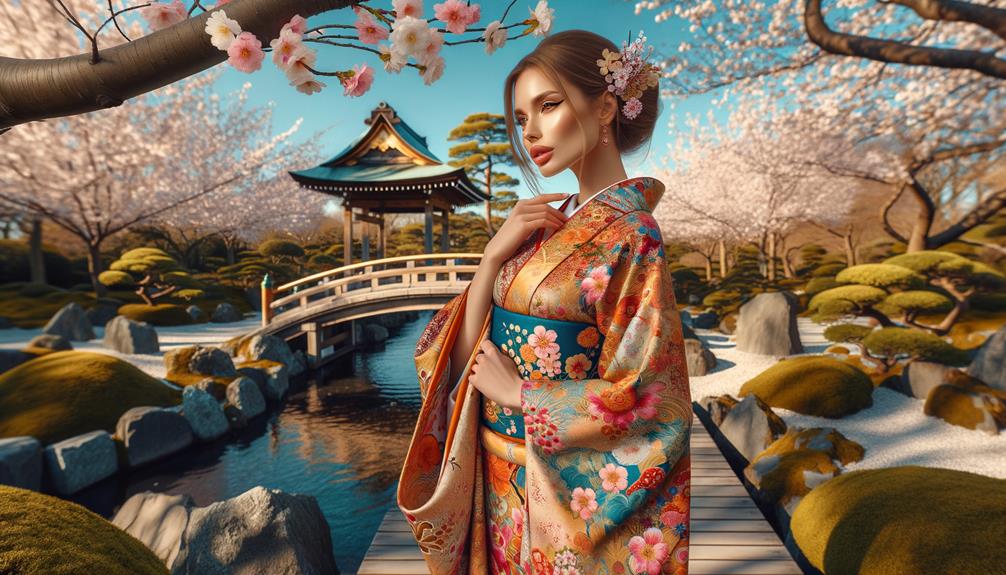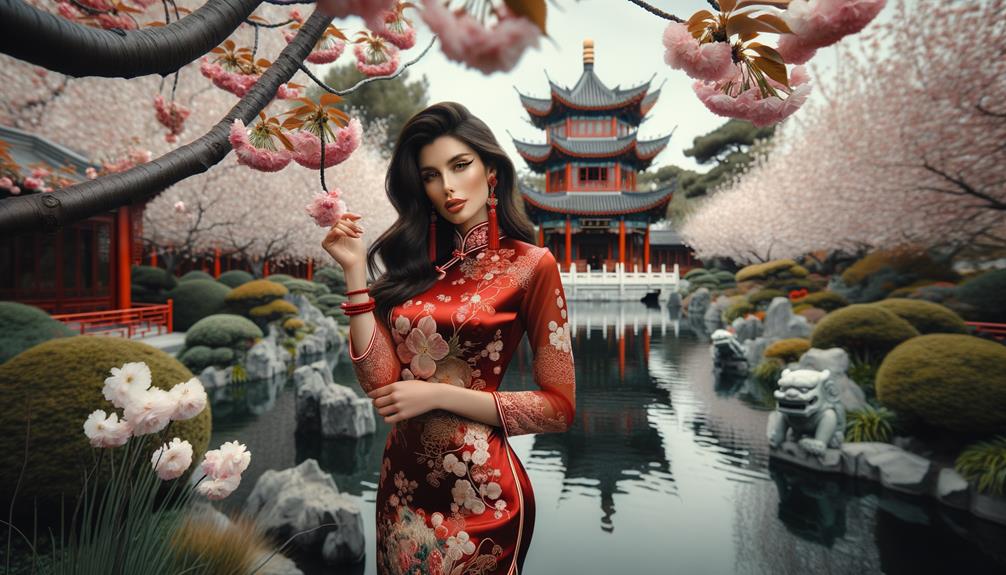Baju Kurung isn't merely clothing; it serves as a portal into Malay traditions. The loose-fitting blouse and ankle-length skirt harmonize modesty with grace in a captivating way. The embroidery subtly tells age-old stories, whispers of customs passed through generations. Seeing someone adorned in Baju Kurung at weddings or religious events sparks curiosity about its adaptation while retaining timelessness. This attire holds metaphorical layers deserving closer examination.
Etymology
The dress style known as 'Baju Kurung' directly translates to 'enclosed dress,' accurately depicting its modest, traditional design favored by Malay women. This attire carries centuries of cultural relevance. Tracing its origins to the 13th century, the Baju Kurung was designed with practicality and modesty at its core.
Tun Hassan Temenggong popularized this traditional garment in the 15th century. The intentions behind this iconic piece are intriguing. Composed of traditional Malay textiles or imported silk, the long sleeves and skirt create an elegant yet modest silhouette. Simplicity underpins its strength.
Interestingly, the term 'enclosed dress' captures the essence of Baju Kurung. It's not merely about covering the body but rather enveloping oneself in a piece of history. The name itself tells a story of cultural preservation, seamlessly blending form and function. In an age where innovation often signifies change, Baju Kurung stands as a testament to enduring tradition.
Historical Background
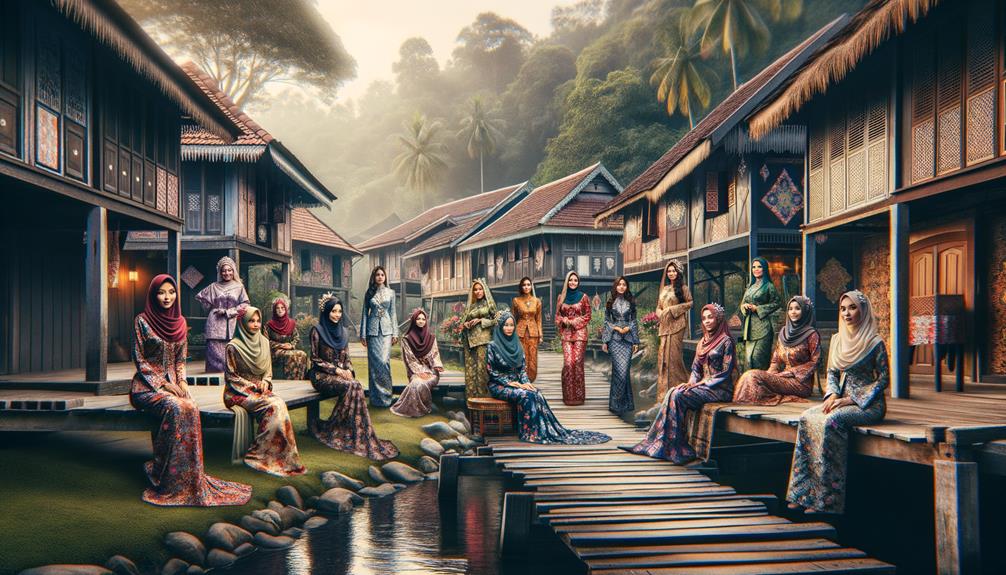
Baju Kurung's origins trace back to the 15th century when Tun Hassan Temenggong introduced this traditional attire. Over time, it gained prominence as Brunei and Malaysia's national dress, its influence spreading to Indonesia, Singapore, and Thailand.
Simple yet elegant, the Baju Kurung comprises a loose, full-length tunic and skirt for women, while men sport a slightly varied version. Despite its age, the dress maintains its core elements, a testament to its timeless appeal.
Interestingly, the Baju Kurung has absorbed foreign influences while preserving its traditional roots. Contemporary iterations feature vibrant hues and intricate designs, making it a favored choice for formal events and celebrations. Yet, the dress remains deeply intertwined with Malay heritage, representing cultural continuity amidst evolution.
Within every thread and seam, the Baju Kurung narrates a rich historical tapestry, proudly donned by women and men, embodying both tradition and modernity.
Components of Baju Kurung
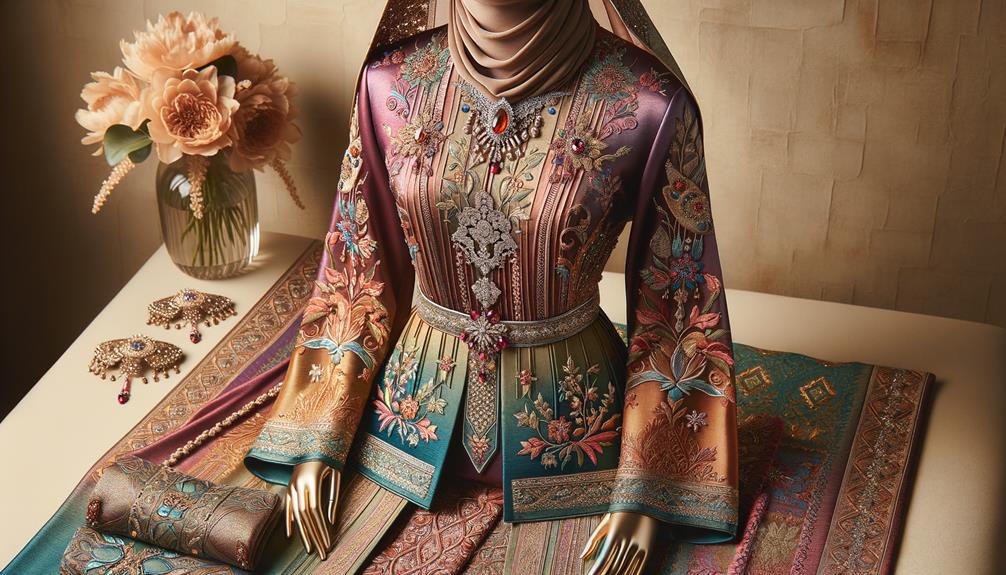
The intricate embroidery and elegant cuts of the Baju Kurung outfits always catch my eye. The traditional long-sleeved top and flowing skirt exude timeless grace, yet modern twists keep the style fresh and appealing. Designers draw inspiration from classic elements while adding contemporary flair, striking that perfect balance of old and new.
Traditional Design Elements
The Baju Kurung embodies timeless elegance through thoughtful design. Its loose-fitting blouse with long sleeves and round neckline offers modesty and grace. The ankle-length skirt complements the blouse, creating a harmonious silhouette suitable for various occasions.
Intricate embroidery adds refinement, making each piece unique. Fabric choices range from lightweight cotton for daily wear to luxurious silk for formal events. Long sleeves provide coverage with a graceful flow, while the classic round neckline flatters all face shapes.
The interplay of these components results in an outfit respecting heritage while allowing personal expression. This balance of tradition and versatility keeps the Baju Kurung relevant in modern wardrobes.
Modern Adaptations Styles
Modern designers breathe new life into the traditional Baju Kurung with refreshing interpretations and contemporary touches. Sleeve lengths and neckline styles shift, each variation adding its unique flair. Designers experiment with adornments like lace, embroidery, and sequins, creating visually striking pieces that blend luxury and modernity.
The silhouette takes on a playful vibe with asymmetric hems and peplum tops. Mermaid-cut skirts hug the body before flaring out, lending an air of sophistication. These reimagined designs don't simply update the look; they redefine it entirely.
Lightweight fabrics like chiffon and satin offer a flowing feel, while brocade and lace add texture. Off-shoulder tops and bell sleeves make appearances, subtly infusing the attire with contemporary flair. High-low skirts and even crop tops now grace the Baju Kurung repertoire.
Versatility emerges as a key factor. Some ensembles include palazzo pants or jumpsuits, blending tradition and modernity in a way that resonates with fashion-forward individuals today. This seamless fusion makes the modern Baju Kurung captivating.
Regional Varieties
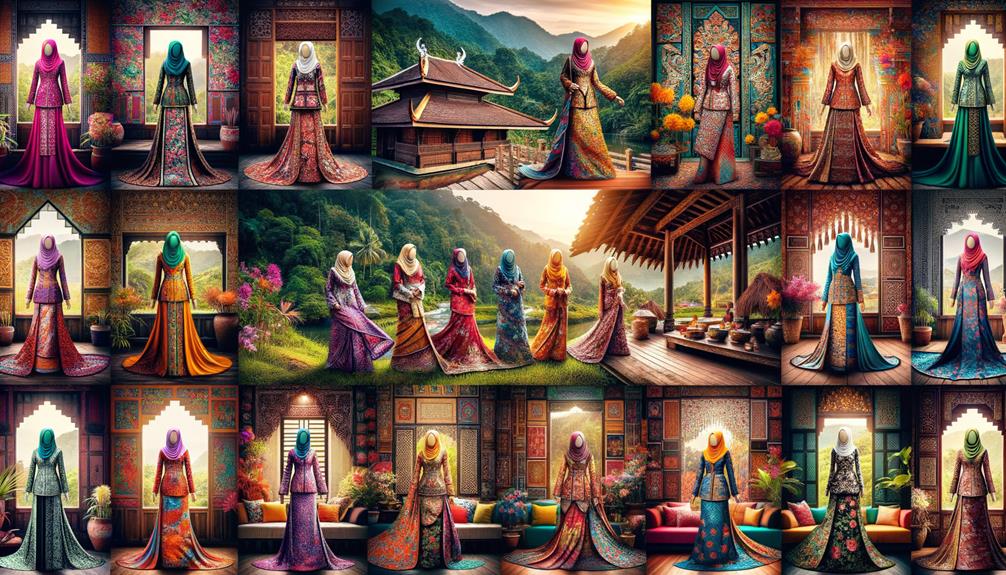
Among Malaysia's diverse cultural tapestry, regional interpretations of the Baju Kurung traditional outfit reveal intricate local influences. The Teluk Belanga style embraces traditional woven materials for men's Sampin sarongs, exuding timeless authenticity. Conversely, the Cekak Musang variation features structured collars, buttons, and distinct pocket designs, lending a formal aesthetic.
These distinct regional styles showcase the rich heritage and craftsmanship inherent in Malay attire. Observing their differences unveils:
- Teluk Belanga prioritizes simplicity, staying true to tradition.
- Cekak Musang leans towards structured formality.
- Fabric choices span woven textiles to luxurious silks.
- Intricate embroidery and beadwork adorn garments.
Witnessing how each region infuses its unique cultural influences into Baju Kurung designs illuminates the tapestry of Malay fashion, blending history with contemporary innovation.
Cultural Significance
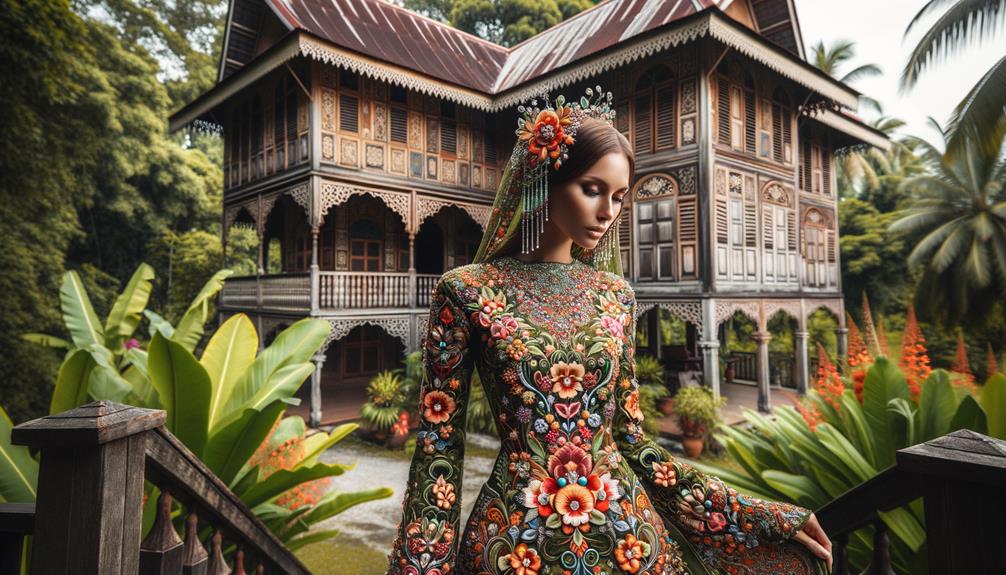
The Baju Kurung, with its intricate regional variations, holds deep cultural significance in the Malay heritage. As the national dress of Brunei and Malaysia, it represents more than mere clothing; it symbolizes tradition, modesty, and elegance.
You'll see it worn at religious ceremonies, weddings, and official functions. Watching how it brings people together, embodying shared values and customs, is truly remarkable. Its presence during Ramadan and Hari Raya Aidilfitri reinforces its profound roots in Malay culture. The Baju Kurung stands as a testament to our collective history, with stories woven into every thread.
Despite evolving influences from foreign styles, the Baju Kurung's essence remains unchanged. Its simple, modest design speaks volumes in a world that sometimes forgets the beauty of restraint. For female civil servants and school students, it's not just attire; it's an identity, a connection to something larger than themselves.
Observing the Baju Kurung reminds us how tradition and modernity can coexist harmoniously. It's a piece of history that lives in the present, proving that elegance and modesty never go out of style.
Modern Adaptations
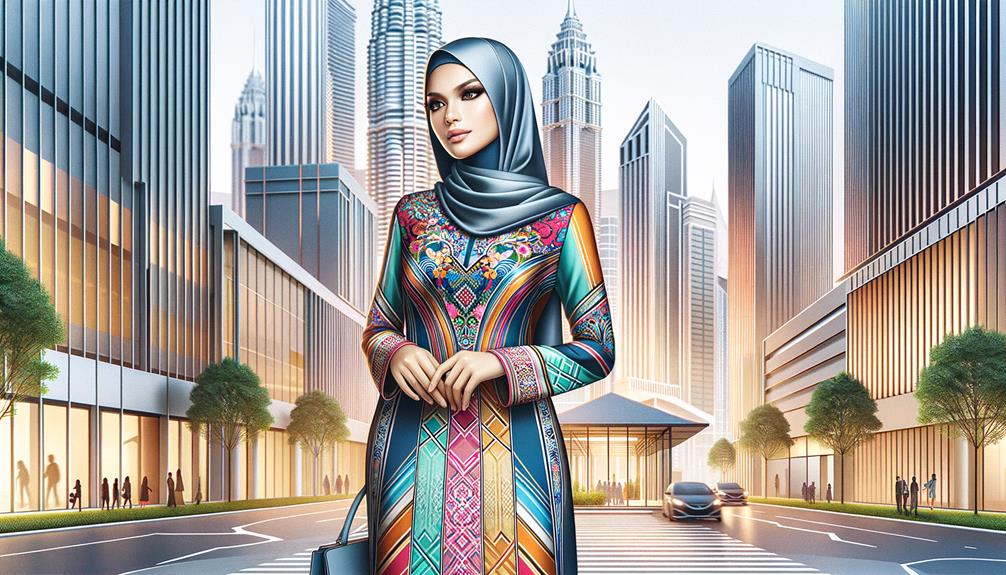
Baju Kurung remains a cultural touchstone, yet fashion designers ensure it stays relevant by fusing tradition with modern aesthetics. Sleeve lengths, hemlines, and necklines now cater to contemporary tastes. Innovative fabrics like lace, chiffon, and satin blend old and new, lending a delicate yet luxurious touch. Sequins, beads, and intricate embroidery add glamour and sophistication.
Ready-to-wear Baju Kurung collections make embracing this style convenient for women. Fashion influencers and celebrities sporting these modern designs drive their popularity through social media. It's intriguing to observe how Baju Kurung continually adapts while honoring its heritage.
Frequently Asked Questions
What Does the Baju Kurung Symbolize?
The Baju Kurung seamlessly combines cultural roots with contemporary fashion. It radiates modest grace while encouraging personal style expression. A harmonious blend of comfort and refinement, this iconic outfit proudly showcases Malaysian identity while embracing evolving trends. Its timeless appeal transcends generations.
Who Can Wear Baju Kurung?
The Baju Kurung, a traditional Malay outfit, transcends boundaries. From students to career women, diverse individuals rock this versatile ensemble. Designers seamlessly blend modern flair with cultural reverence, making the Baju Kurung a timeless and inclusive fashion statement.
What Is a Malay Dress Called?
The Baju Kurung, a traditional Malay dress, exudes graceful modesty. It's more than apparel; it's an artful tapestry of heritage and progress interwoven. Each piece narrates stories of cultural identity passed down through generations. The timeless elegance of the Baju Kurung remains relevant, adapting with contemporary flair while honoring cherished traditions. This sartorial legacy continues captivating admirers with its harmonious blend of the past and present.
What Is the Difference Between Baju Kurung and Kebaya?
I find the baju kurung and kebaya differ in tailoring and style. The baju kurung is looser and modest, while the kebaya hugs the body in an ornamental fashion. One prioritizes simplicity and tradition; the other highlights elegance and refinement.



